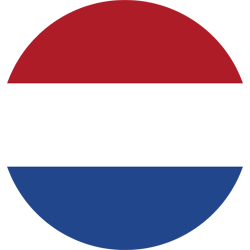Introduction
The Canary date palm (Phoenix canariensis) is a large solitary palm species that is native to the Canary islands. It is closely related to the true date palm (Phoenix dactylifera). In the Canary islands it is found on all seven islands in scattered populations of varying sizes. The island of La Gomera hosts the largest number of P. canariensis palms, it is said that over 100.000 individuals grow here. It is often stated that it grows from sea level to 600 meters, however on La Gomera the maximum altitude limit seems to be around 1300 meters. It can usually be found in ravines called Barranco’s where water is close (Figure 1). The pinnate dark green leaves are 4-6 meters long and there can be up to 200 leaves in the crown. The tick trunks can grow to 30 meters high in cultivation although wild palms usually do not reach this height.

Figure 1: Wild P. canariensis growing in a ‘barranco’ ravine near Masca, Tenerife
P. canariensis is one of the most popular ornamental palm species and it is cultivated in the subtropics and temperate regions. It is a popular species because of the high ornamental value, relatively fast growth and its ability to grow in a very wide range of climates. It can handle high temperatures as long as there is sufficient water available and it can even survive frost up to -8 degrees Celsius. It can be found in gardens as far north as the south of the British islands, Ireland and The Netherlands. In favourable places it has become naturalized (Figure 2) and it is sometimes considered an invasive species. They were already popular ornamental plants in the Victorian era when large P. canariensis palms were transported by steamships from the Canary island to the United Kingdom where they could be worth as much as a regular house. Many Phoenix species including the true date palm P. dactylifera are planted in the Canary Islands for ornamental purposes. Most Phoenix species easily hybridize with P. canariensis . Introgression of these foreign genes pose a threat to the endemic populations and many wild populations already show signs of interspecific hybridization. It is likely that the vast majority of P. canariensis palms in cultivation have some interspecific genes and possibly there are almost no true to type P. canariensis left in cultivation. Cultivated P. canariensis palms in the Mediterranean are suffering from the red palm weevil (Rhynchophorus ferrugineus) which was introduced from Asia. Many large palms have already perished because of the red palm weevil. On the Canary islands the fight against the red palm weevil is relatively successful.
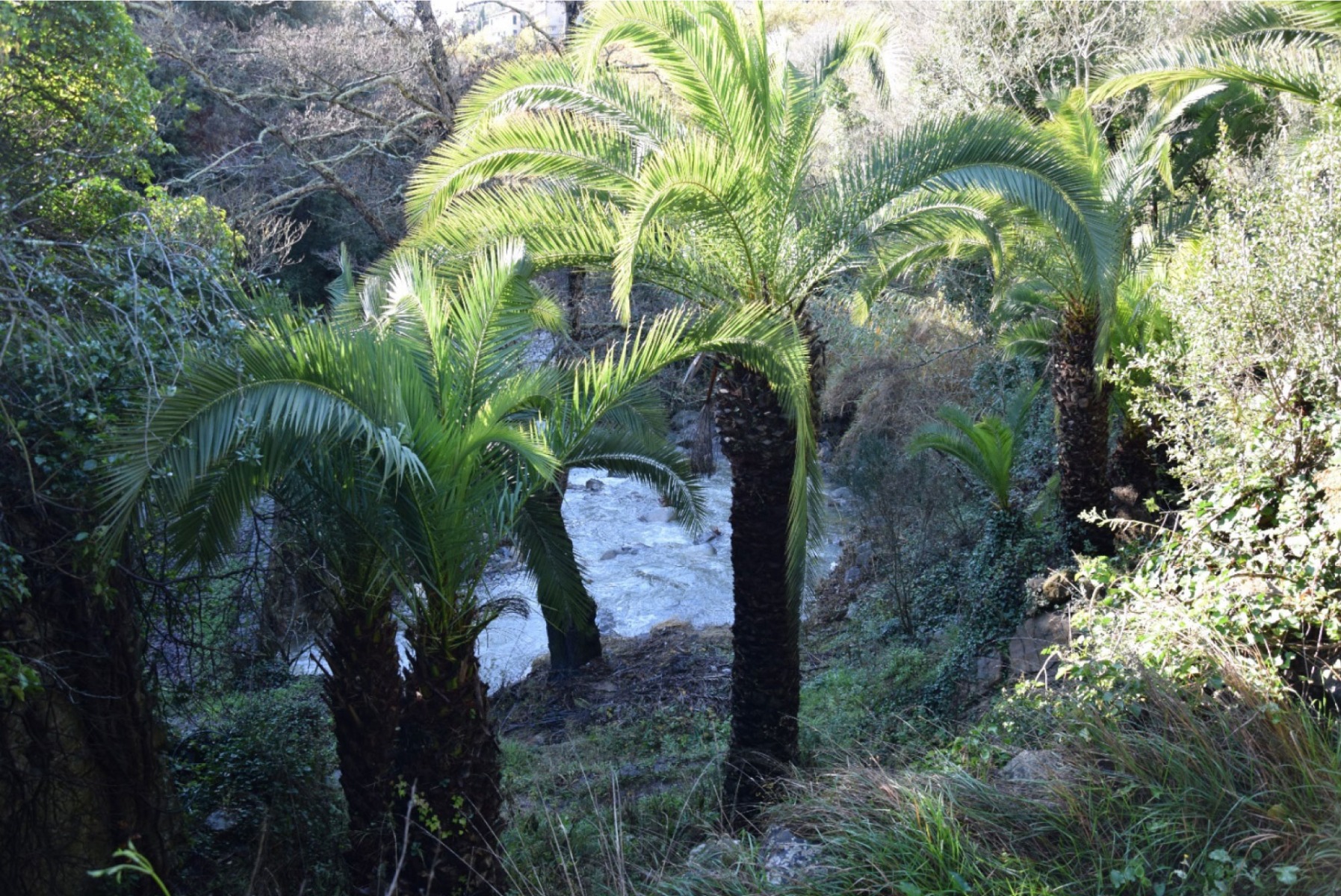
Figure 2: Naturalized P. canariensis in a steep ravine close to the river near Borgihera, Italy
The climate on the Canary islands is influenced by trade winds, making the north side of the islands moist and green and the south side arid and dry. P. canariensis grows on both the north and the south side of the islands. On the dry side of the islands they often grow in deep valleys. The microclimates in the valleys create moist oases in which the palms thrive. The strong roots penetrate the volcanic rocks to reach the water (figure 3). On the south side they usually grow to higher altitudes then the north side.

Figure 3: P. canariensis palms growing in the volcanic rock in Icod de los Vinos, Tenerife
Phoenix canariensis on Tenerife
Wild P. canariensis can be observed in relatively small populations scattered around the island ranging from sea level up to about 900 meters altitude. Morphological characteristics of P. dactylifera can already be observed in wild populations on Tenerife. The trunks of the palms of Tenerife appear to be relatively short compared to populations on La Gomera, which seem to grow much larger. It is not clear if this trait is caused by genetics or by more favourable climatic conditions on La Gomera. Also the palms become smaller when they reach their maximum altitude limit. There are many populations scattered around the island of Tenerife, some interesting populations are discussed here.
Masca population
The population at the south-western slopes in Masca on the east side of Tenerife is one of the larger remaining populations (figures 4-6). The population ranges from 300 to about 900 meters altitude. Some individuals show a clustering habit, suggesting that there is already some interspecific geneflow in this population from most likely P. dactylifera.
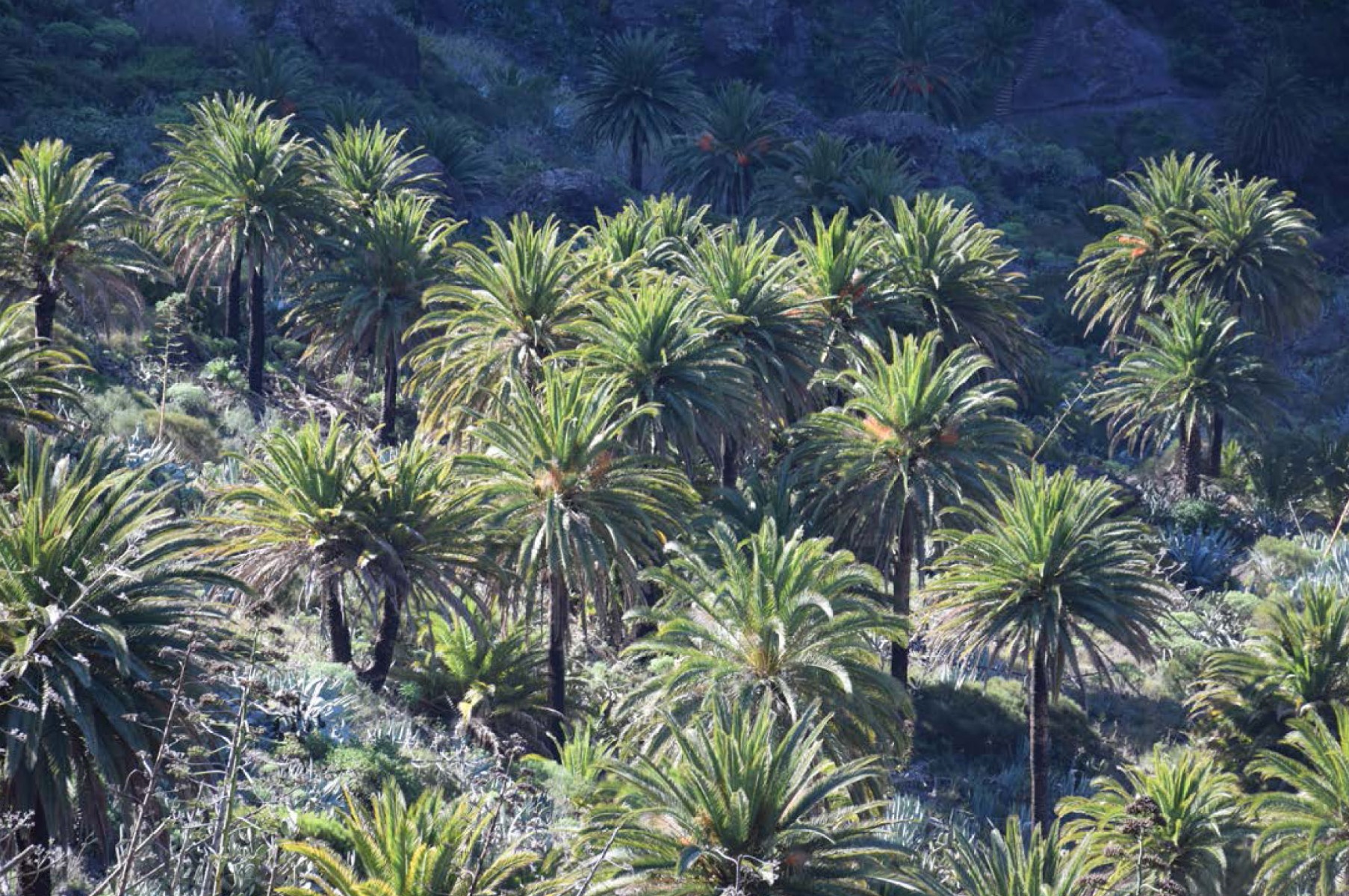
Figure 4: P. canariensis at 700 meters altitude, Masca, Tenerife
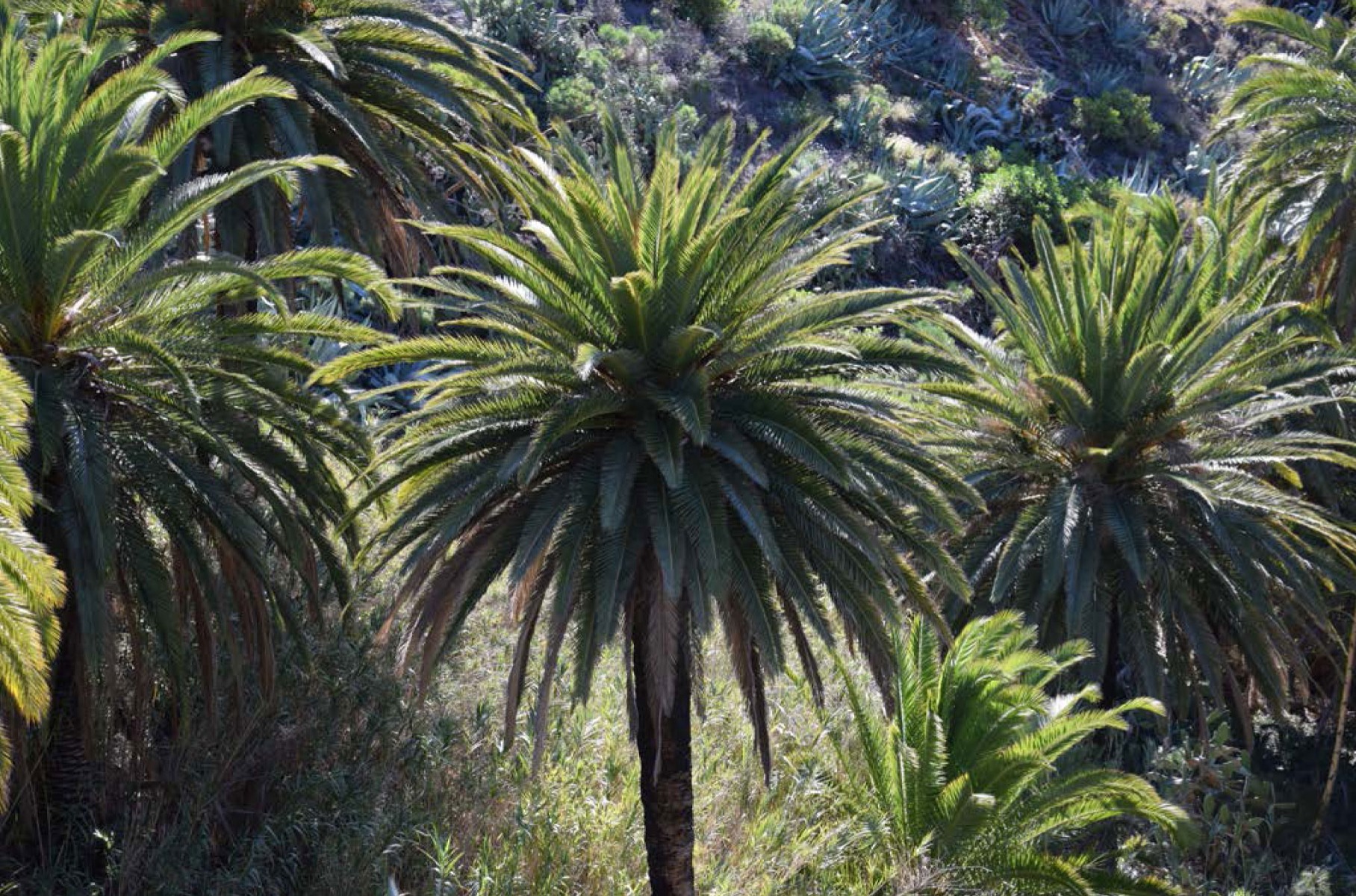
Figure 5: P. canariensis at 700 meters altitude, Masca, Tenerife
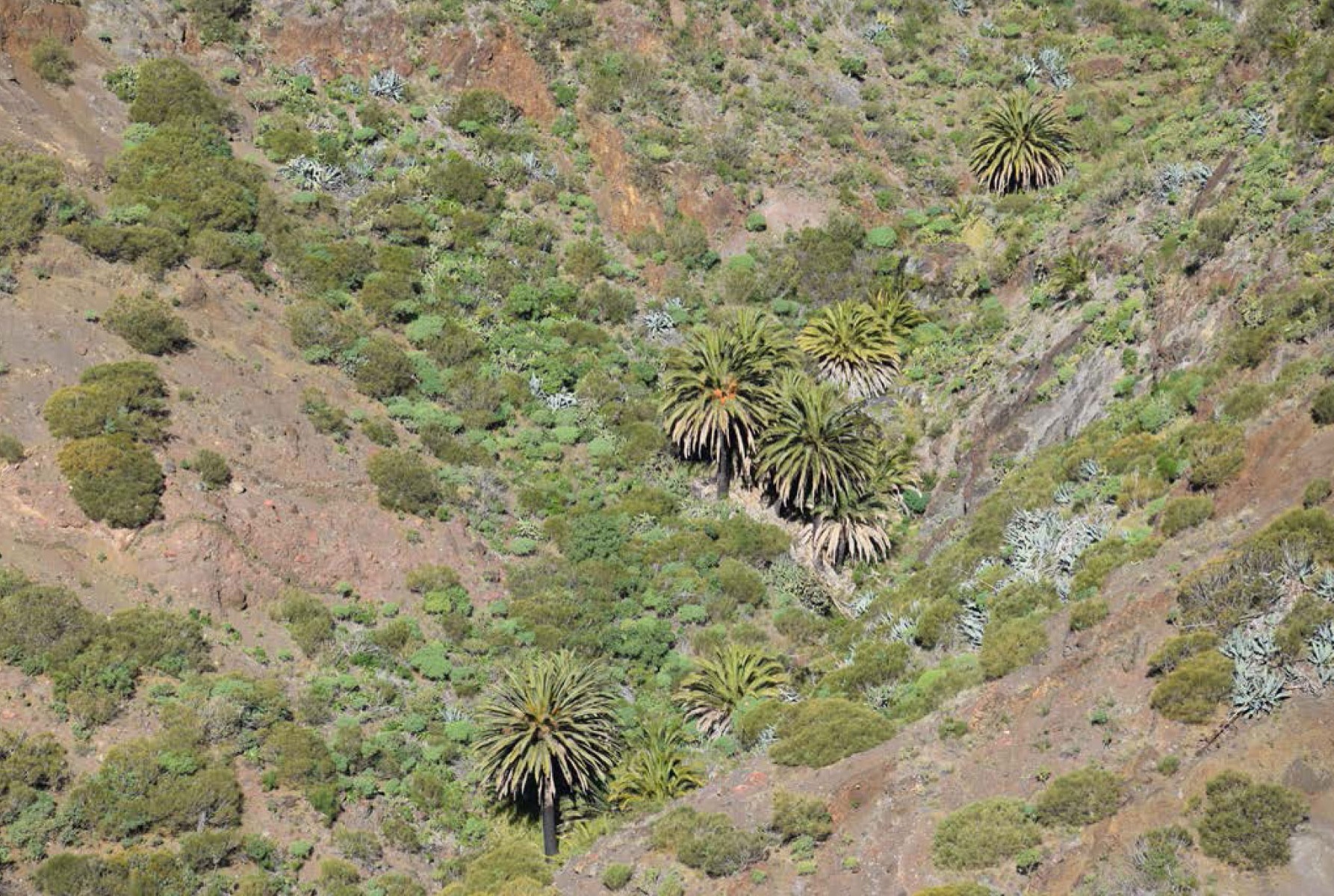
Figure 6: P. canariensis at 900 meters altitude, Masca, Tenerife
Population near the town of La Tierra del Trigo
This population is located north of the town of La Tierra del Tigo. This population is close to the Masca population but is located on the moist northern slopes. The leaves appear to be greener and longer compared to Masca which is probably a result of the moist conditions and because these palms experience more shade because of the northern orientation of the slopes (figure 7).
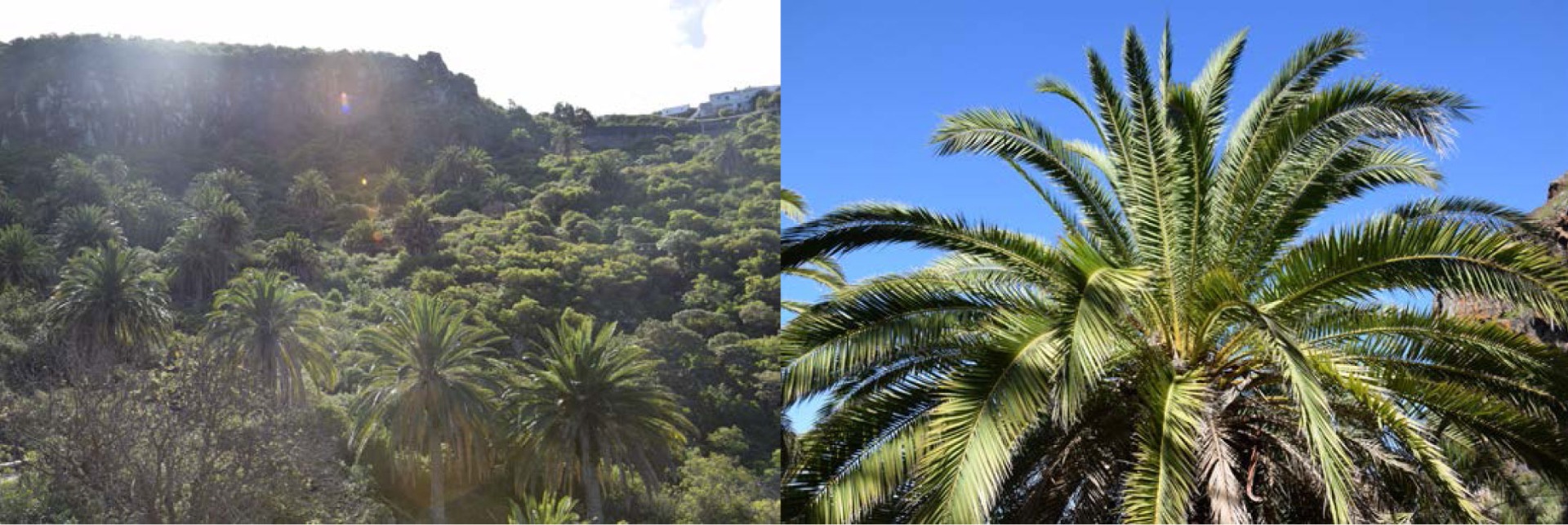
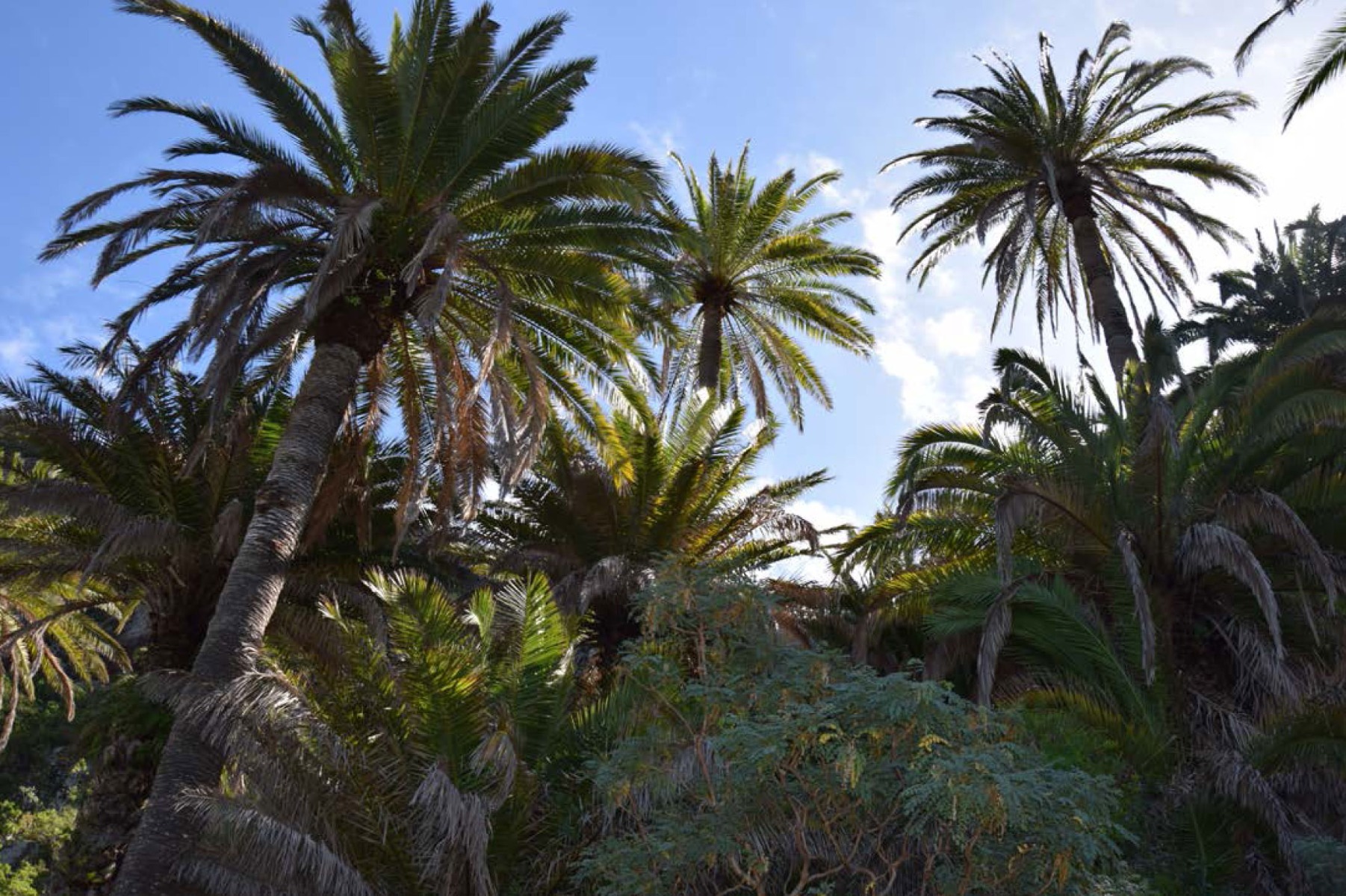
Figure 7: P. canariensis on northern slopes at 300 meters altitude near the town of La Tierra del Trigo
Population at Rambla del Castro
The population at Rambla del Castro is located in the central north of Tenerife in a northern orientated moist valley. The palms grow near the sea right until the beach. This population is threatened because P. dactylifera palms are growing in the middle of the population and many palms already show clustering habits. The red palm weevil is clearly present in this population. Also palms that are located uphill show signs of drought which may be caused by a dam that is placed above the population from where the water is used for irrigation of nearby agricultural fields (figure 8).
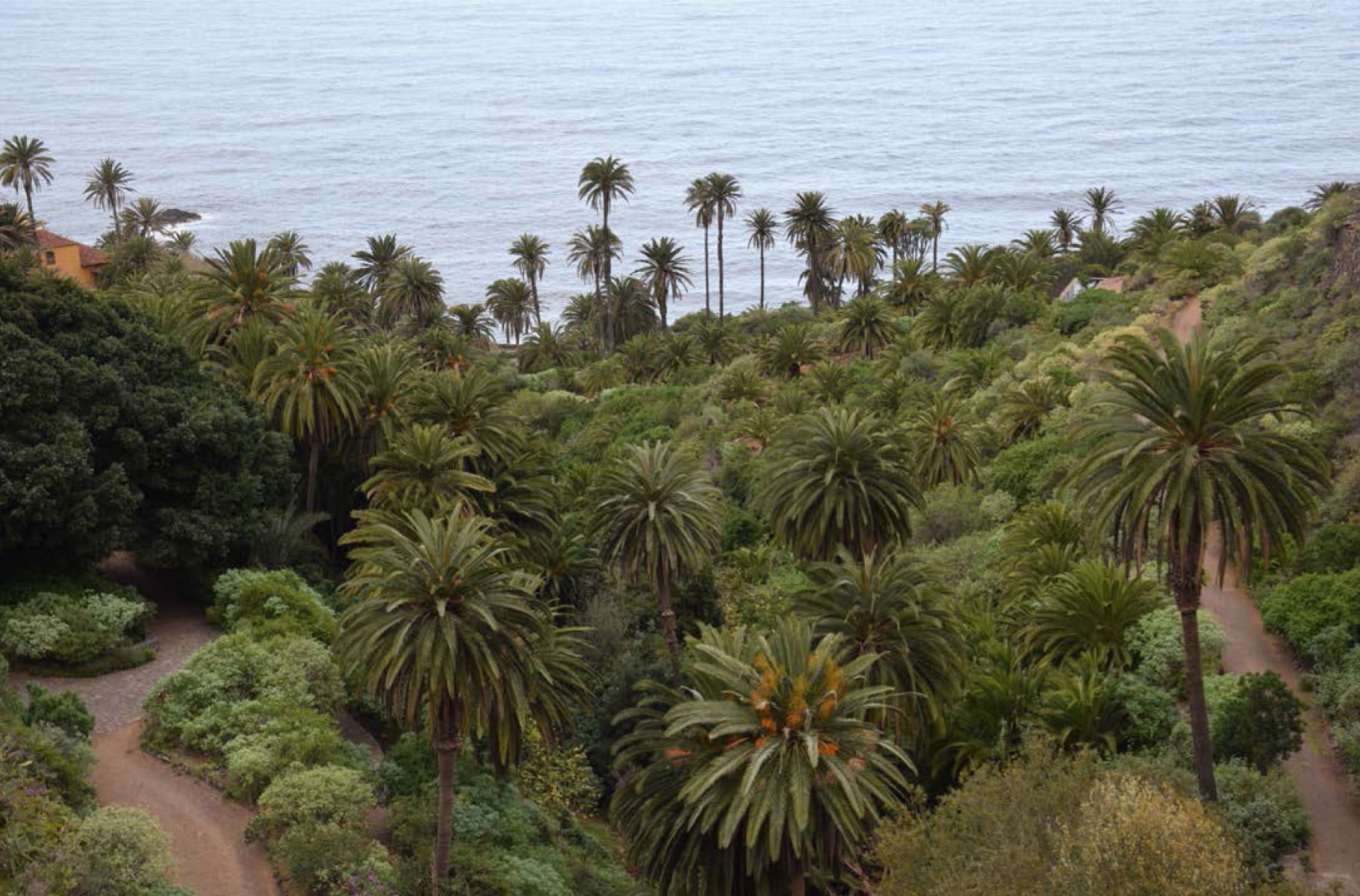
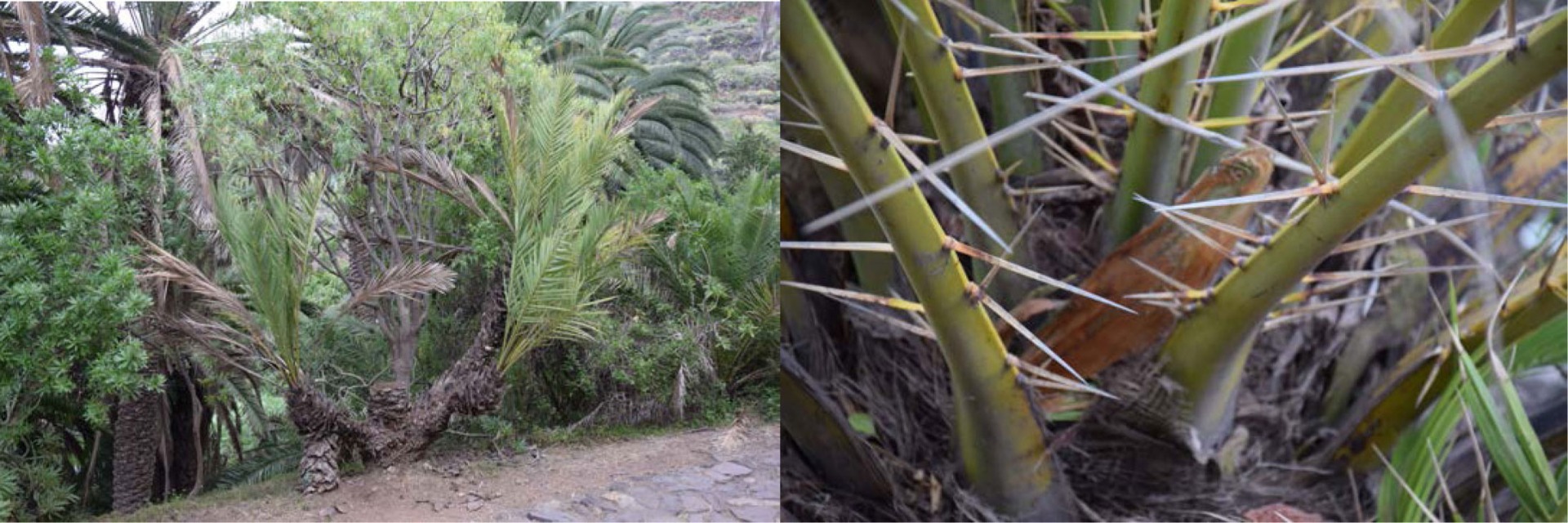
Figure 8: P. canariensis and P. dactylifera on northern slopes at 300 meters altitude near the town of La Tierra del Trigo
Population at Barranco del Cercado de San Andrés
The population at Barranco del Cercado is located in the extreme northeast of Tenerife. These palms are growing on 300 to 400 meters altitude. The valley has a south eastern orientation and the lush vegetation is an indication that there is more precipitation in this area than in other areas on Tenerife. There are many cultivated P. dactylifera palms planted in the nearby town of San Andrés and naturalized ones growing next to the road leading to the population. Some individuals appear to have a distinct leaf type that has a greenish-grey colour (figure 9). It is therefore likely that these palms are not true to type anymore.
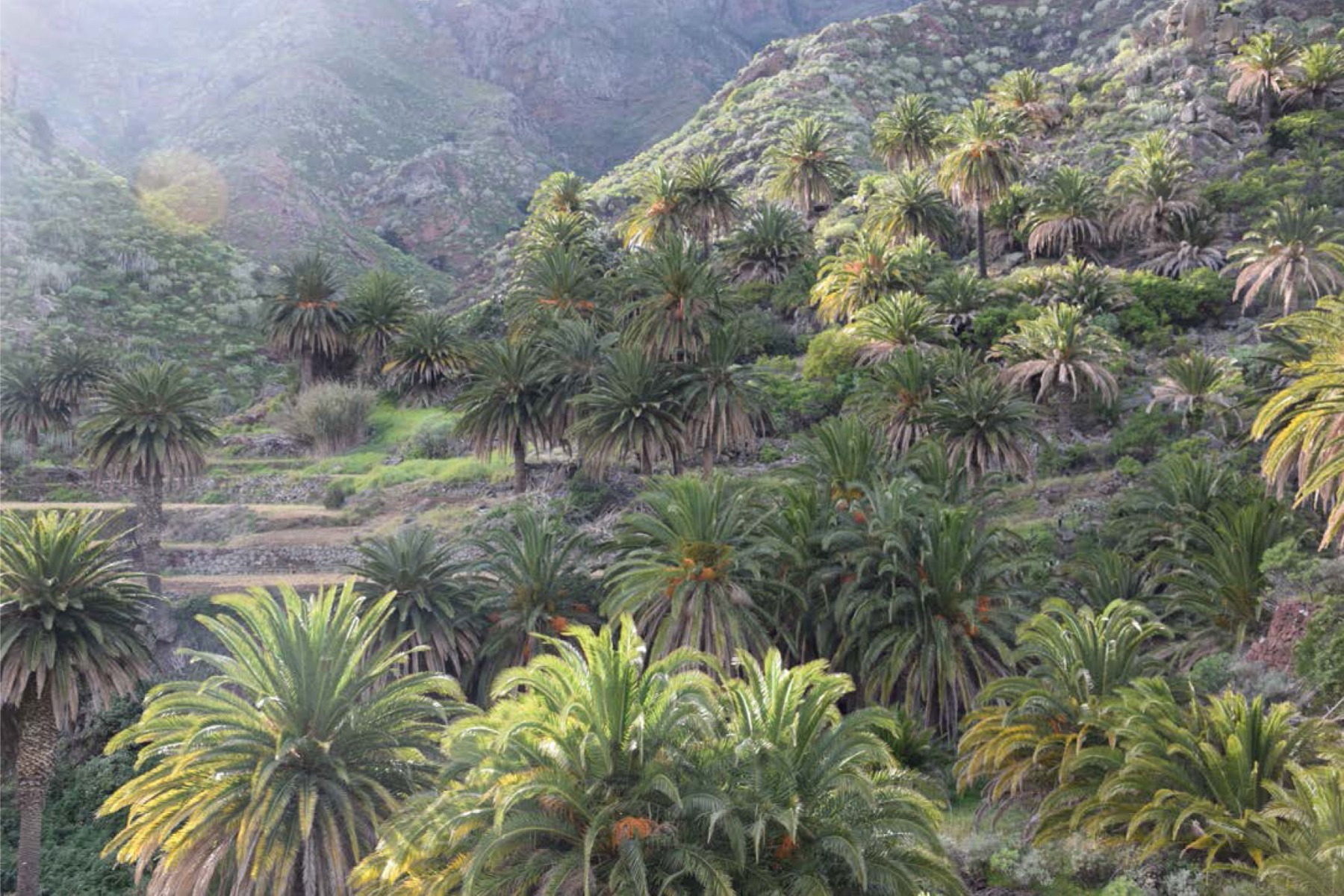
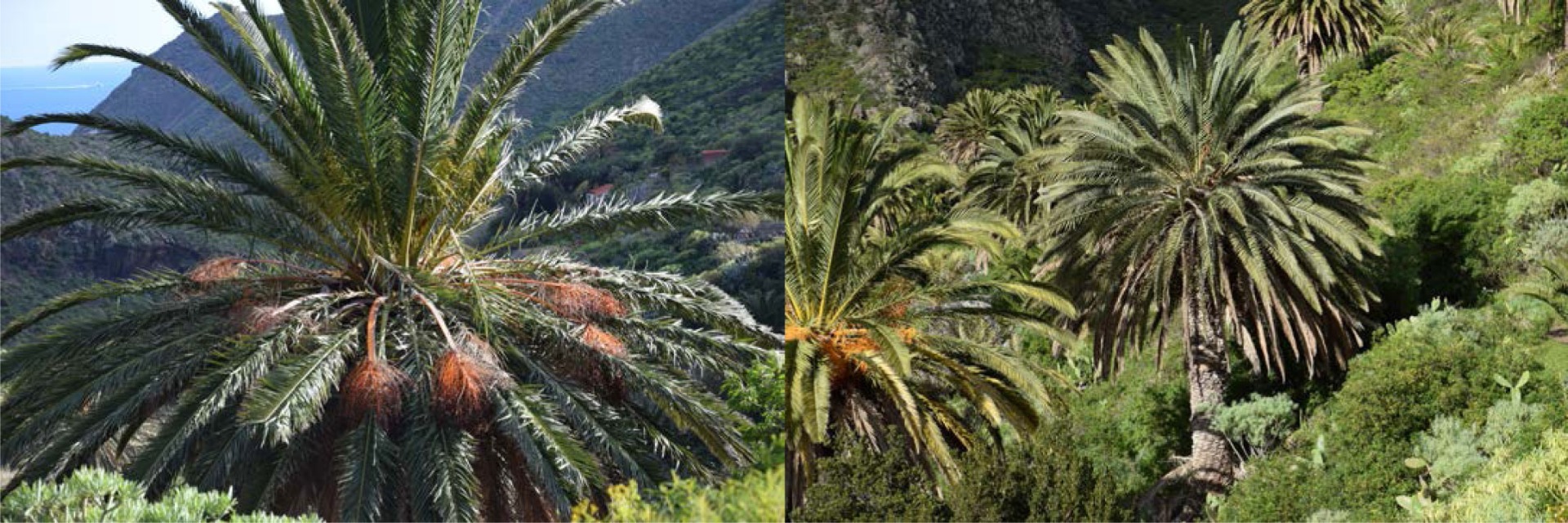
Figure 9: P. canariensis palms at Barranco del Cercado de San Andrés showing different leaf types and colours
Phoenix canariensis on La Gomera
La Gomera has the largest stand of P. canariensis of all Canary islands. The main populations are located on the south side of the island. The climate on La Gomera is usually a bit cooler compared to Tenerife. P. canariensis palms are used to produce palm wine. To collect the sugar rich plant saps to produce the wine the newest leaves in the centre of the crown are cut rather deep. After the saps have been collected the palm will resume growth and will have produced a new crown about one year later. La Gomera probably hosts the last remaining true to type P. canariensis.
Benchijigua population
The abandoned agricultural terraces in Benchijigua are home to a large stand of impressive P. canariensis (figure 10-12). The palms in this population reach enormous heights, much higher than populations on Tenerife. A favourable climate is probably the reason that they can grow so large, however genetics could also play a role. At Benchijigua the altitude limit seems to be around 1000 meters. Although there are many P. dactylifera planted in the nearby town of San Sebastián and some naturalized individuals are growing next to the road that lead to Benchijigua, no morphological signs of hybridization were observed in this population. The population seems to be pure for now, but only one bird flight is needed to drop a date seed near the population and given time this could change the appearance of the palms.
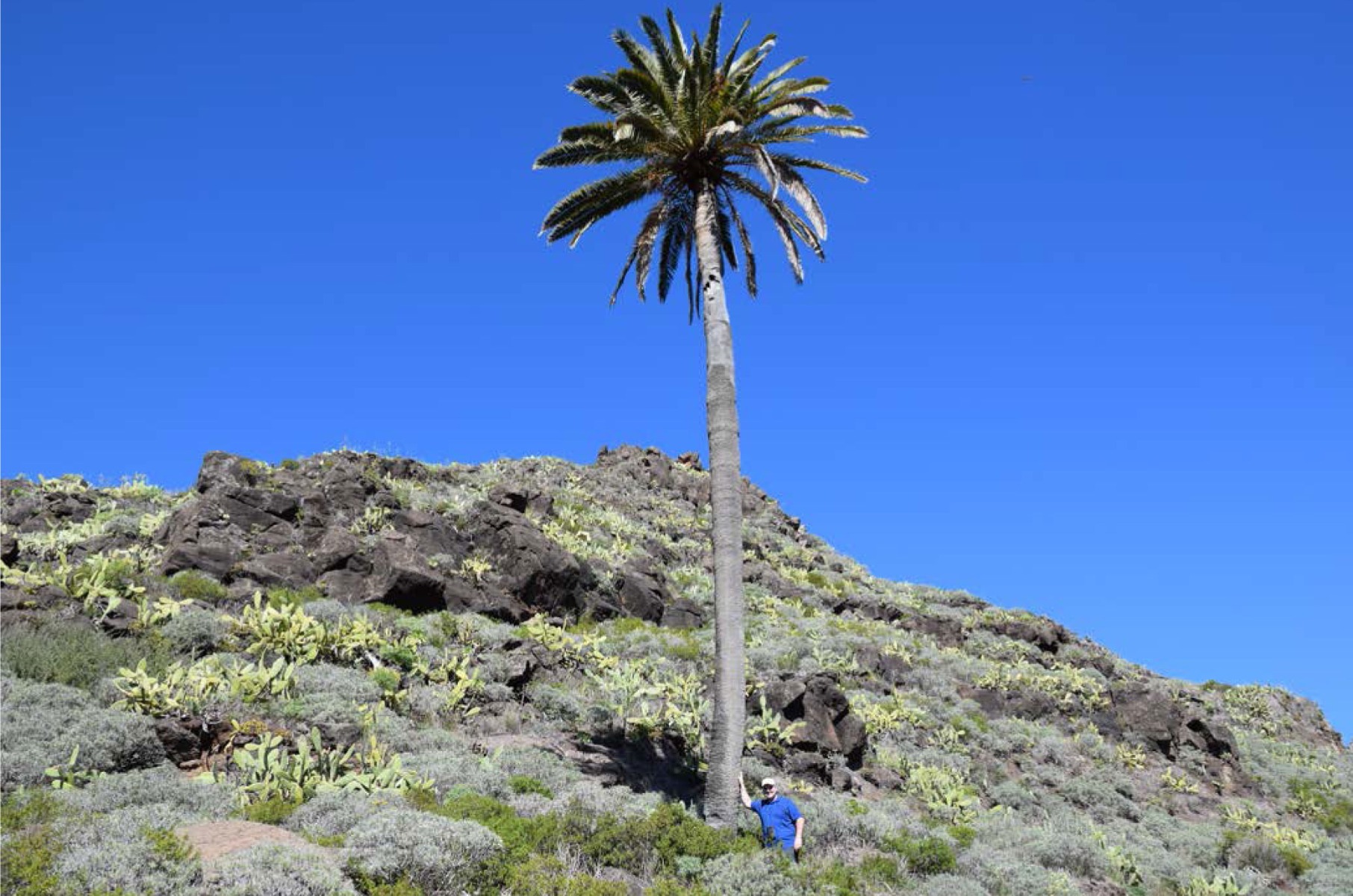
Figure 11: A large female P. canariensis standing on a hill at 900 meters altitude near Benchijigua , La Gomera Figure 12:
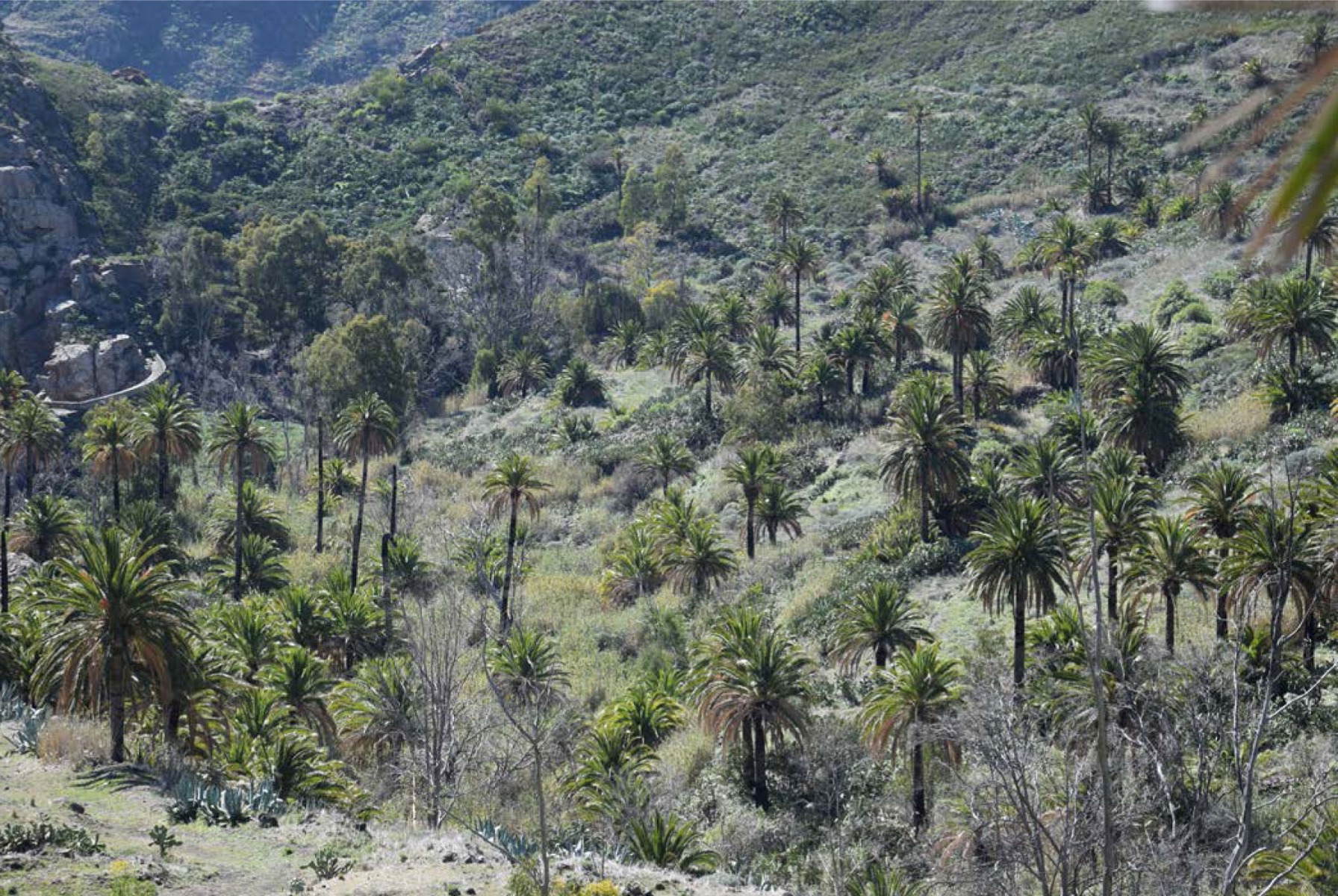
Figure 12: Overview of the lower parts of the valley at 600 meters altitude near Benchijigua , La Gomera
Population at the Barranco de los Manantiales
The population of the Barranco de los Manantiales is located just east of the town of Temocodá. This P. canariensis stand grows to the highest altitude limit (figure 13). They grow up to 1300 meters altitude. At this altitude the average temperatures are much lower compared to sea level and this has an effect on the morphology of the palms. They stay relatively small with short, thick trunks. Also there are only few palms that produce inflorescence and the ones that do have only few fruits. No signs of interspecific hybridization were observed in this population and they appear to be pure P. canariensis.
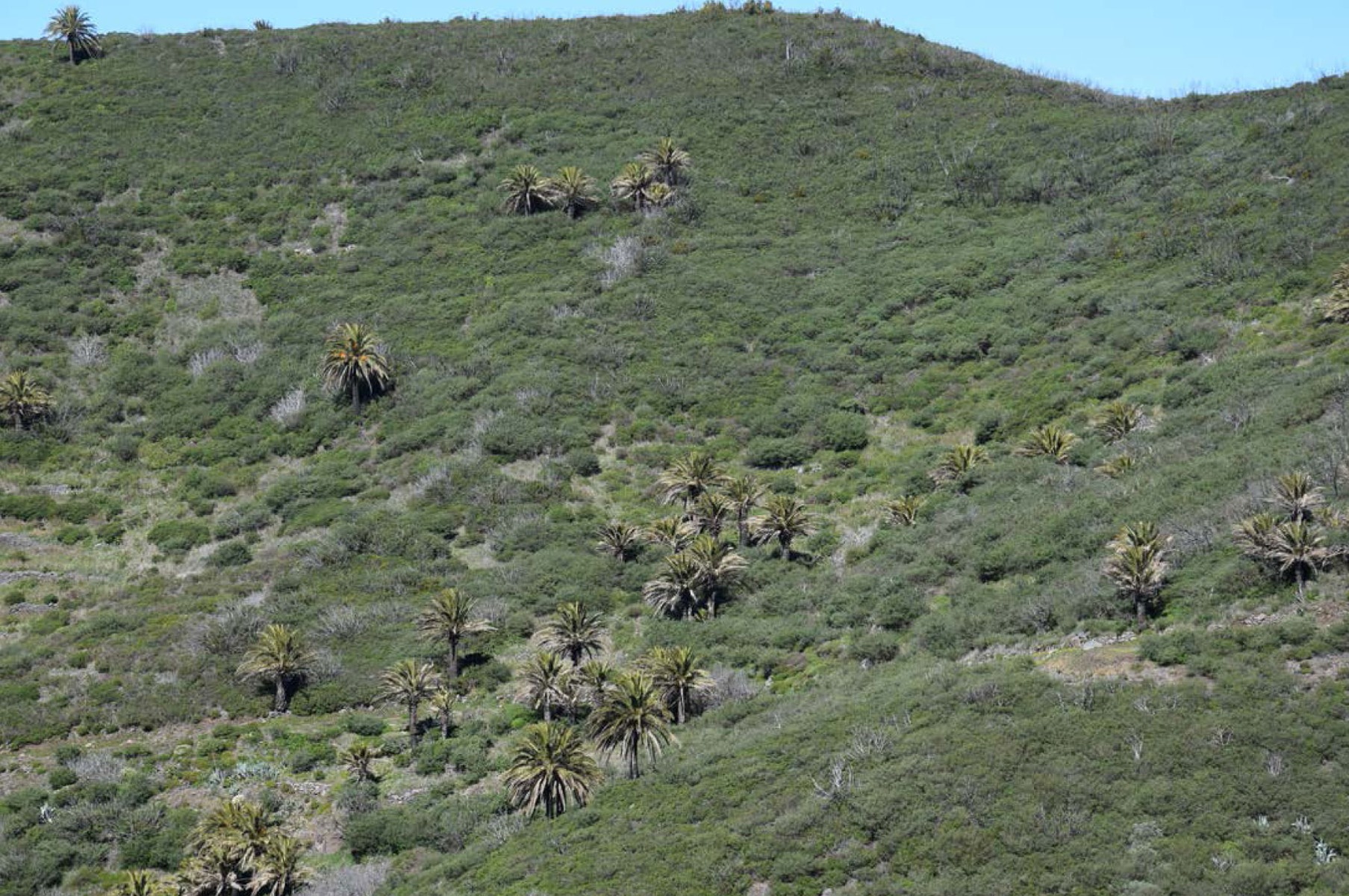

Figure 13: P. canariensis growing at 1300 meters altitude, the maximum natural altitude limit of the species at Barranco de los Manantiales, La Gomera
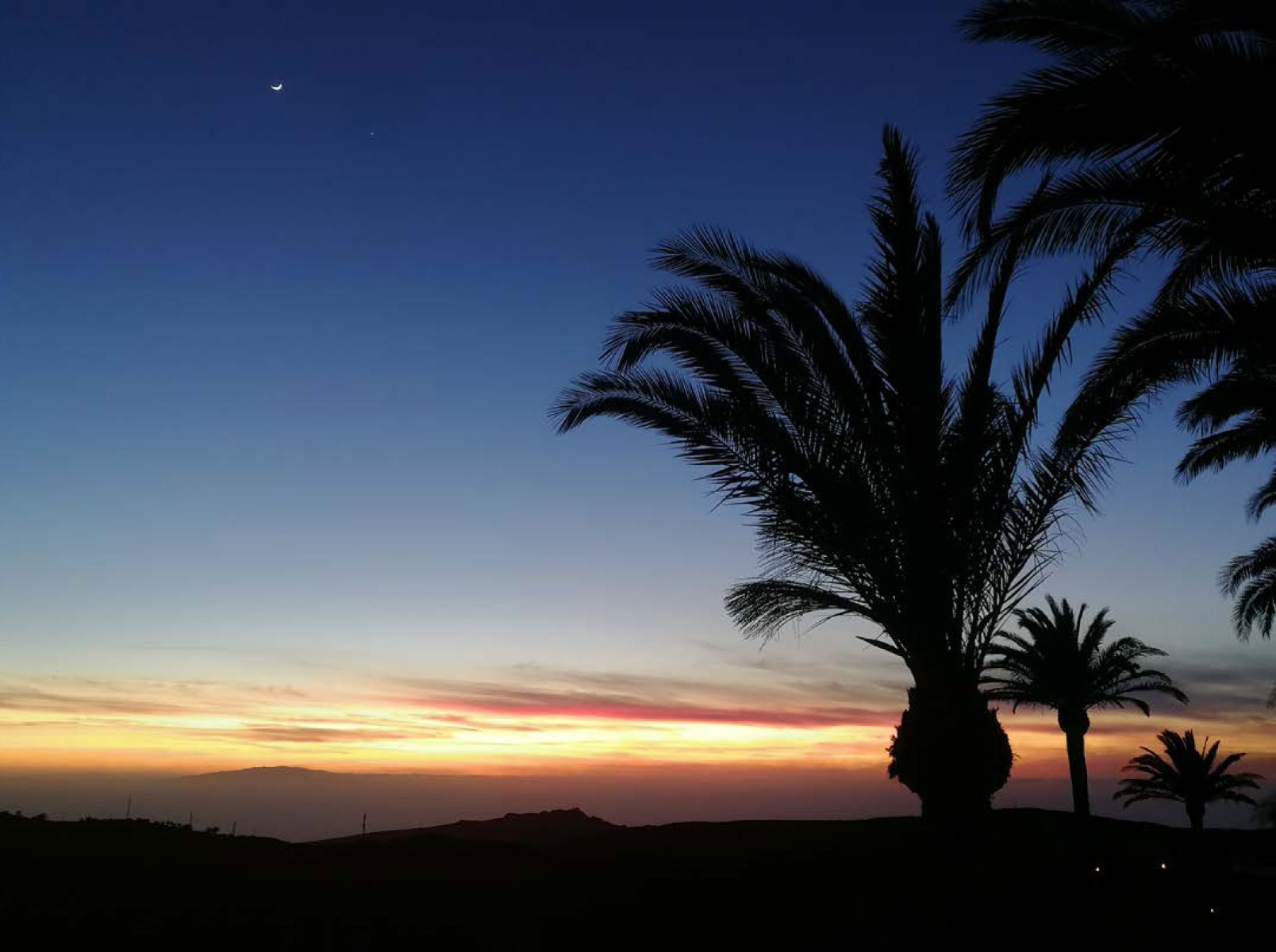
Sunset with P. canariensis in front, in the town of Las Hayas, La Gomera

